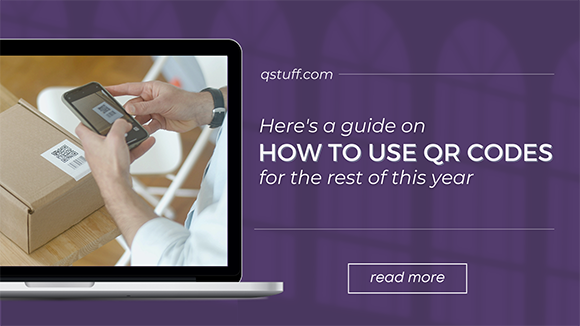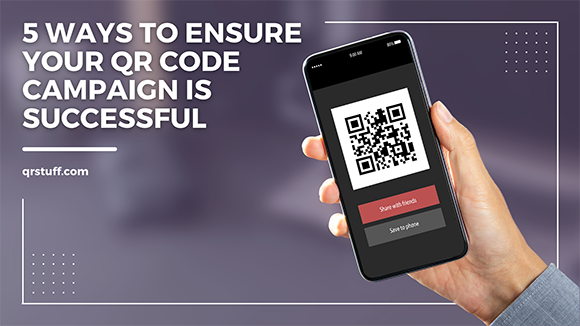Benefits of Using Plain Text QR Codes
1. Simplicity and Speed
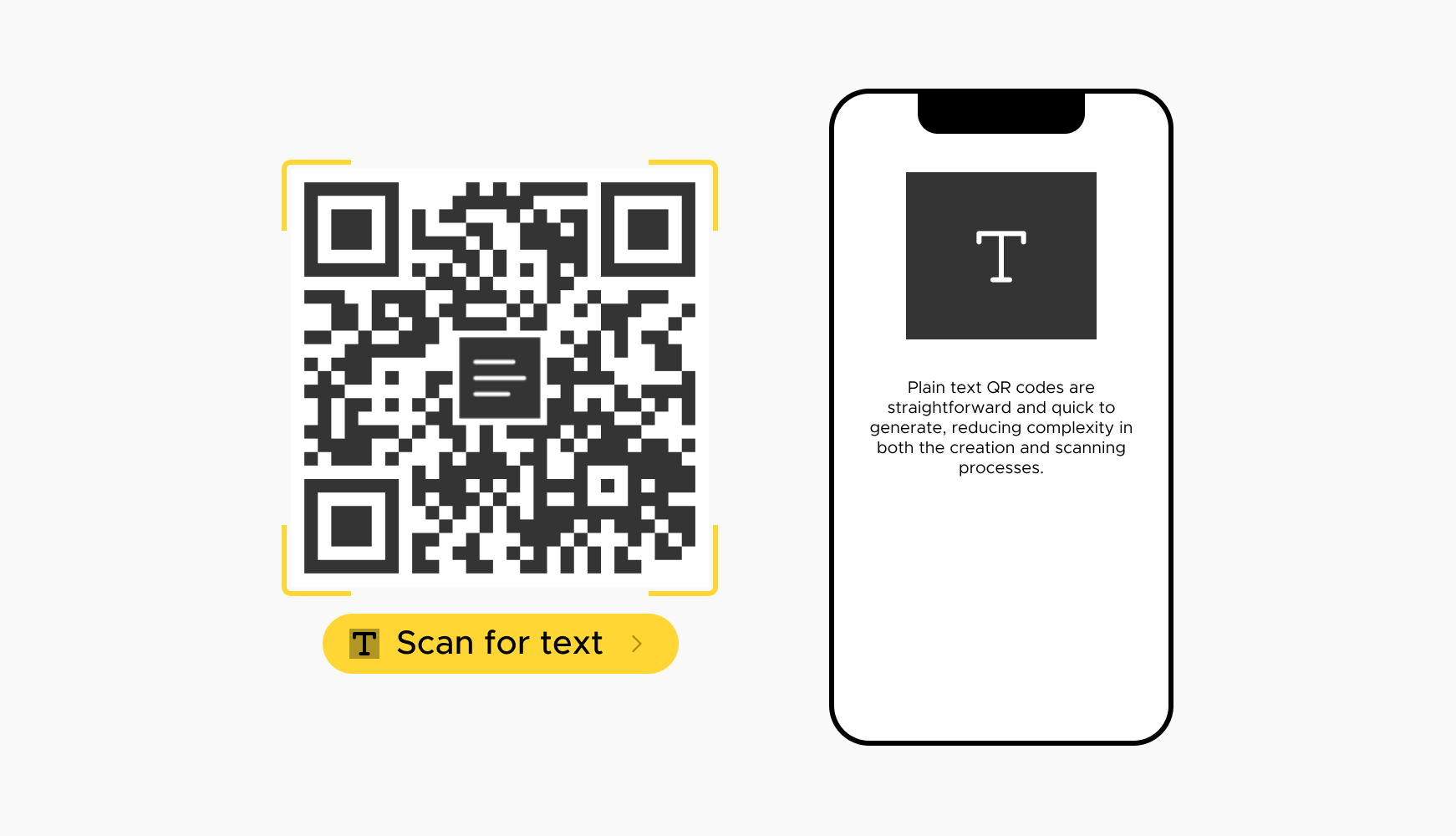
Plain text QR codes are simple and quick to generate, reducing complexity in creation and scanning. Unlike QR codes with embedded URLs or multimedia, plain text codes use minimal data, making them easy to create and scan without specialized apps. This means faster deployment and fewer technical hurdles for businesses and individuals. Whether sharing a message or a code, plain text QR codes offer an efficient solution, ideal for quick information dissemination in events or emergencies.
2. Error Reduction
There’s less room for error with plain text QR codes as they don’t involve links or complex data structures. This simplicity reduces the risk of encoding errors or technical issues that can occur with more complex QR codes. For example, a plain text QR code is less likely to suffer from broken links, corrupted data, or compatibility issues with different scanners. This reliability is crucial in situations where accurate and immediate information is needed, such as in emergency instructions or critical communications. By minimizing the potential for errors, plain text QR codes ensure that the intended message is conveyed accurately and efficiently. This reliability makes them a trusted tool for both everyday use and specialized applications.
3. Offline Accessibility
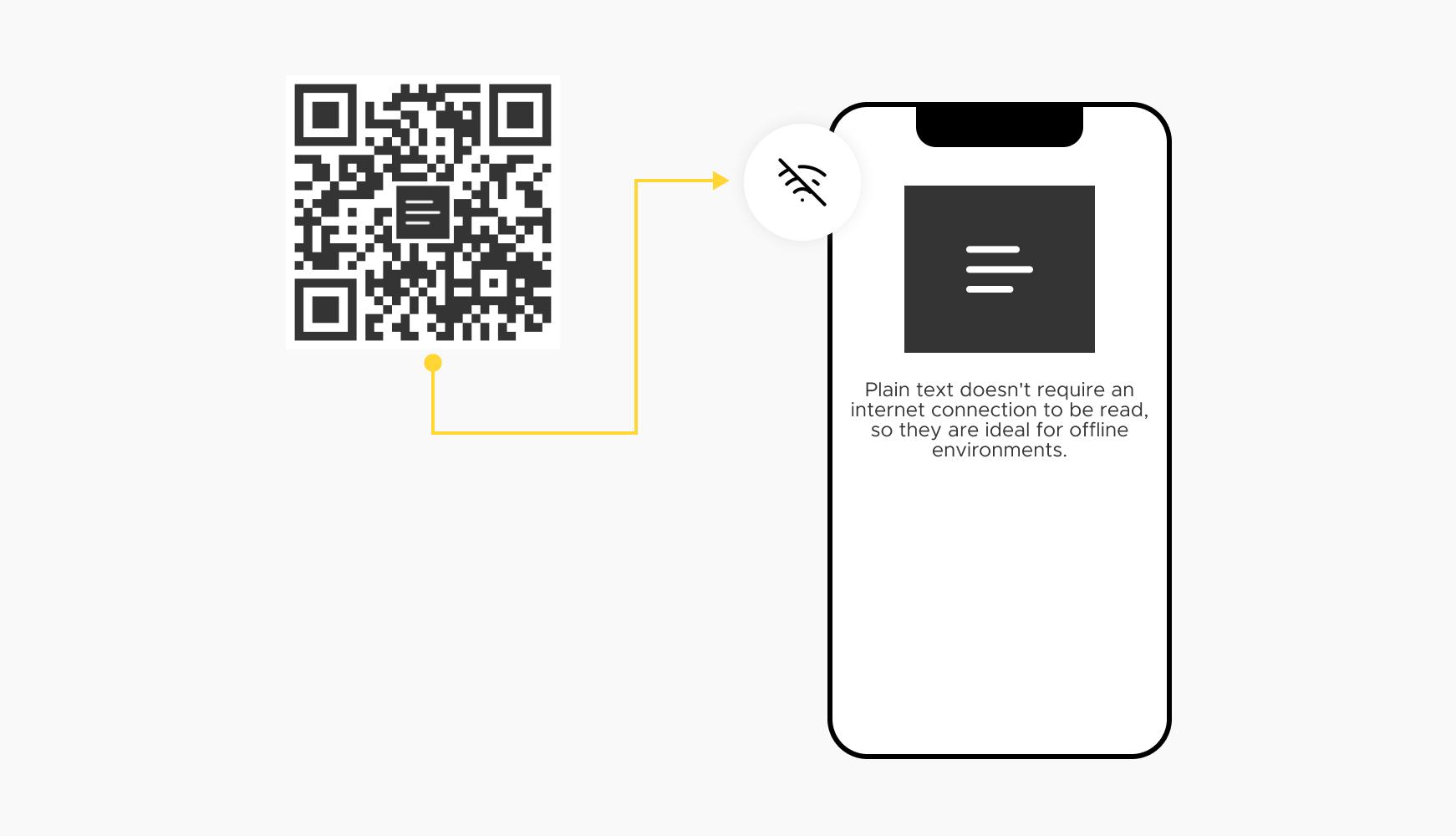
Since plain text doesn't require an internet connection to be read, these QR codes are ideal for offline environments. This makes them particularly useful in areas with limited or no internet access, such as remote locations or places with poor connectivity. For instance, educational institutions can use plain text QR codes to share study materials or instructions with students who may not have reliable internet access at home. Similarly, businesses can provide essential information to customers or employees without worrying about connectivity issues. The offline functionality ensures that the information encoded in the QR code is always accessible, making plain text QR codes a reliable and versatile tool for various applications.
4. Cost-Efficiency
With minimal data requirements, plain text QR codes often lead to lower printing costs, especially when compared to more complex QR codes. The simplicity of plain text means that the QR code can be printed at smaller sizes while still being easily scannable, reducing the amount of space and ink needed for printing. This can result in significant cost savings, particularly for businesses that need to print large quantities of QR codes for promotional materials, product packaging, or instructional guides. Additionally, the lower data requirements mean that even basic QR code generators can create these codes without the need for premium services or subscriptions. This makes plain text QR codes an economical choice for both small and large-scale applications.
Create a Plain Text QR Code
Ready to discover how QR codes can transform your business? Start
by creating your custom QR Code today
Examples of using Plain Text QR Codes
1. Retail Promotions
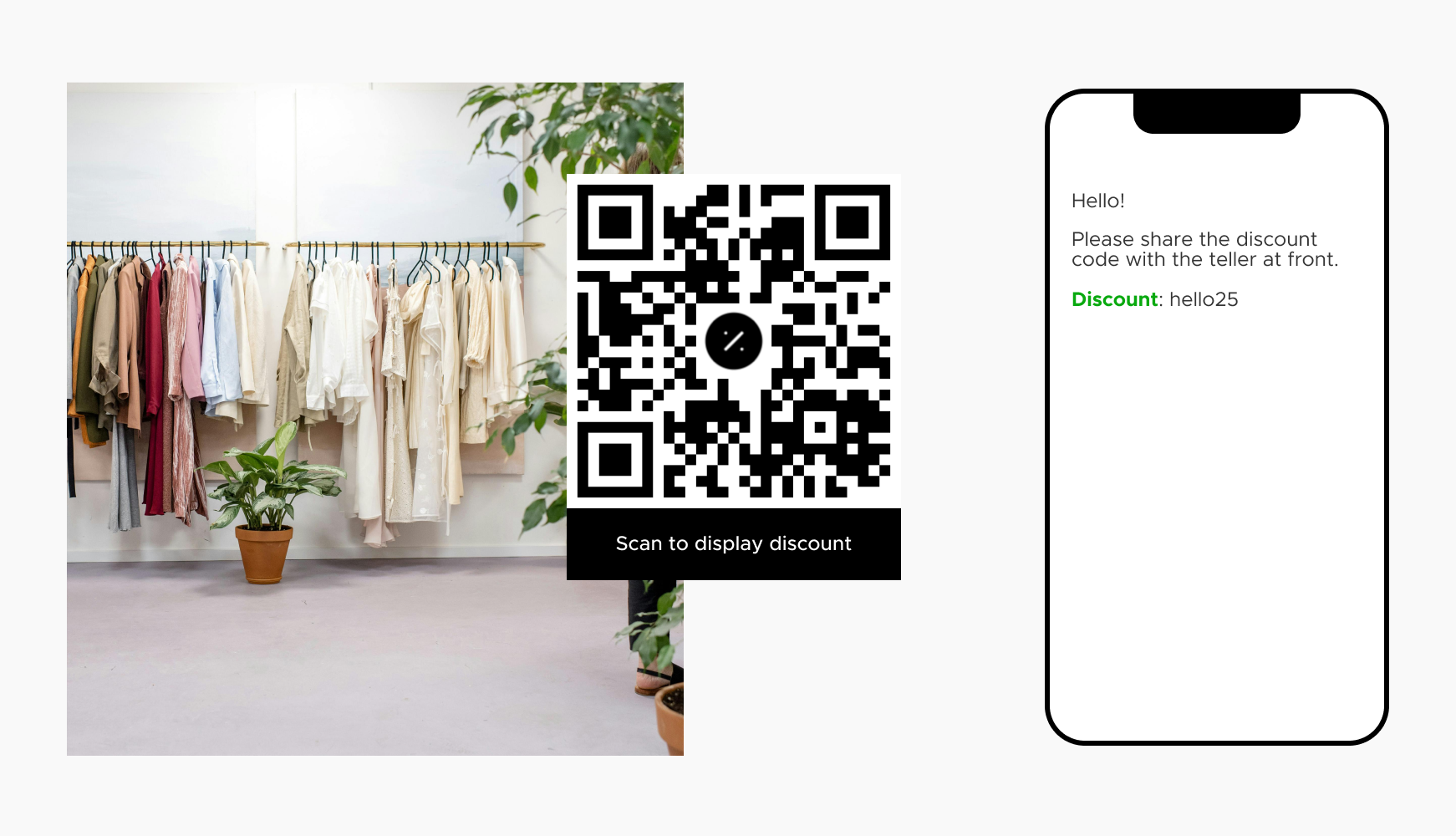
Retailers can use plain text QR codes to display discount codes or special offers in-store. By placing these QR codes at strategic locations, such as store entrances, product displays, or checkout counters, customers can easily scan the codes to access exclusive deals and discounts. This not only enhances the shopping experience but also encourages customer engagement and repeat visits. For example, a clothing store might place QR codes on promotional posters or price tags, allowing shoppers to quickly see the discount percentage or a special promo code they can use at the register. This method is both efficient and environmentally friendly, reducing the need for printed flyers and coupons.
2. Product Information
Manufacturers and retailers can attach plain text QR codes directly on product packaging to provide instructions or additional product details. This is particularly useful for items that come with complex assembly instructions, usage guidelines, or safety warnings. For example, a furniture company can include a QR code on the packaging that, when scanned, displays step-by-step assembly instructions or a list of tools required. Similarly, a food manufacturer might use a QR code to provide detailed nutritional information, ingredient lists, or cooking instructions. This approach not only saves space on the packaging but also ensures that customers have immediate access to vital information.
3. Event Information
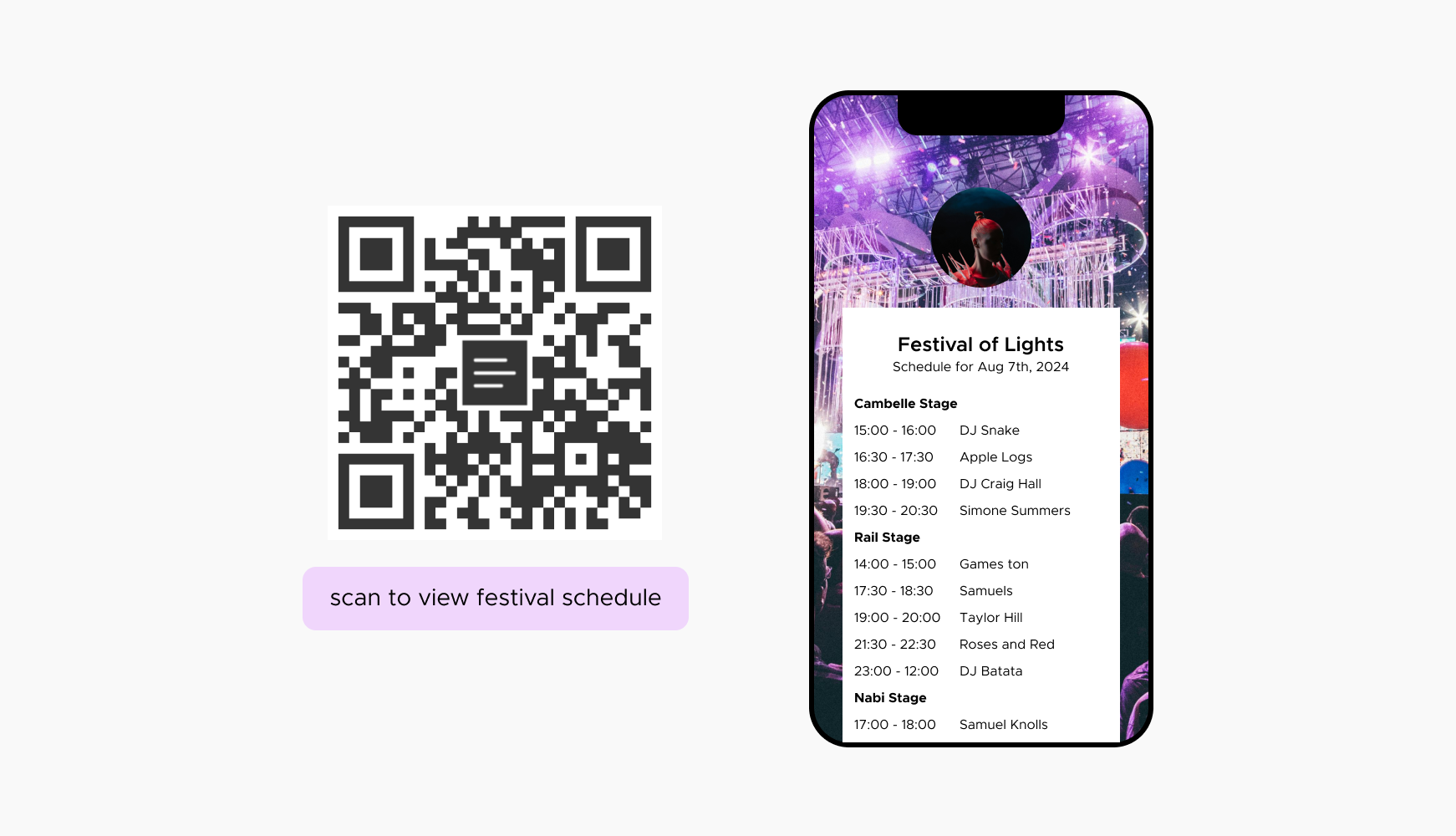
Event organizers can leverage plain text QR codes to provide essential event details such as dates, times, and locations on tickets or posters. This ensures that attendees have quick and easy access to important information without needing to refer to additional materials or websites. For instance, a concert promoter can include a plain text QR code on event tickets that, when scanned, displays the concert date, venue address, and start time. Similarly, conference organizers can use these QR codes on promotional materials or event badges to offer instant access to schedules, speaker bios, or venue maps. This simplifies the dissemination of information and enhances the overall attendee experience.
4. Education
Teachers can use plain text QR codes to share quick notes or study tips with students, making learning more interactive and accessible. By placing these QR codes in textbooks, on classroom walls, or in homework assignments, educators can provide students with additional resources and support. For instance, a math teacher might include a QR code on a worksheet that links to a brief explanation of a complex concept or a step-by-step solution to a problem. Similarly, language teachers can use QR codes to provide vocabulary lists or grammar tips. This use of technology helps engage students and enhances their learning experience by offering quick and easy access to supplementary materials.
How to Create a Plain Text QR Code
Step 1: Choose a Trustworthy QR Code Generator
Select a reliable QR code generator like QRStuff, which offers a range of features to create dynamic and customizable QR codes suited for your business needs.
Create a Plain Text QR Code
Ready to discover how QR codes can transform your business? Start
by creating your custom QR Code today
Step 2: Select the Right Type of QR Code
Select the appropriate type of QR code for your needs. Such as a the plain text type to direct users to the info you would like to share.

Step 3: Customize Your QR Code’s Design
Add customization to your QR code, such as your server's logo, colors, or other branding elements, to make it visually appealing and recognizable.

Step 4: Test the QR Code
Before distributing your QR code, test it with multiple devices to ensure it directs to the intended place.

Step 5: Download and Implement Your QR Code
Print your Snapcode on various materials, such as business cards, posters, flyers, or merchandise, to make it easily accessible to your target audience.

Step 6: Track Performance Over Time
Use QRStuff’s dashboard to track the performance of your QR codes. Collect feedback and measure the success of each code, allowing you to optimize their use and improve customer engagement.

Best Practices for Plain Text QR Codes
- Place Strategically
Position the QR code where it’s easily accessible and likely to be scanned by your target audience. Consider high-traffic areas and places where people are likely to pause and have the opportunity to scan the code, such as entrances, exits, waiting areas, or at eye level on posters and signs. Avoid placing QR codes in locations that are hard to reach or see, such as low corners or areas with poor lighting. Strategic placement ensures that your QR code is noticed and utilized, maximizing its effectiveness.
- Choose Contrasting Colors
Use high contrast between the QR code and the background to enhance visibility. A common practice is to use a dark color for the QR code itself (like black) and a light background (like white). This contrast makes the QR code stand out and ensures it can be easily scanned by any device. Avoid using colors that blend into the background or are too similar in tone, as this can make the QR code difficult to read. If you are incorporating brand colors, ensure that the contrast remains high enough for the code to be functional.
- Test Before Deployment
Always test your QR code on multiple devices to avoid any potential issues. Different smartphones and QR code readers may have varying capabilities, so it’s crucial to ensure your QR code works across a range of devices and applications. This step helps identify any problems with readability or compatibility before your QR code goes live. Testing can prevent user frustration and ensure a seamless experience. Make sure to test in different lighting conditions and at various angles to simulate real-world scanning scenarios.


